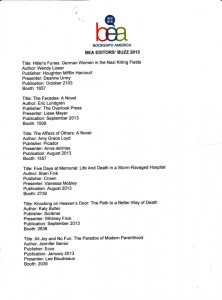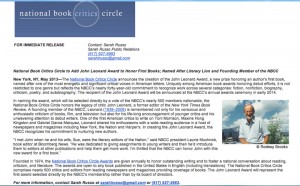I’m happy to announce that as literary agent for author J. Michael Orenduff, in conjunction with the Silver Bitela Agency, my company Philip Turner Book Productions recently licensed the six-book POT THIEF mystery series to Open Road Integrated Media, a major player in digital publishing. The books, previously self-published by Mr. Orenduff, are The Pot Thief Who Studied Pythagoras, The Pot Thief Who Studied Ptolemy, The Pot Thief Who Studied Einstein, The Pot Thief Who Studied Escoffier, The Pot Thief Who Studied D. H. Lawrence, and The Pot Thief Who Studied Billy the Kid. They will all be published by Open Road in print and digital editions beginning in 2014.
As a devoted mystery reader myself, I adore the POT THIEF books and have earlier written about them here. They are set in and around Albuquerque, New Mexico, featuring dealer in Native America pottery Hubie Schutz and his sidekick in sleuthing, wise-cracking Susannah Inchaustigui, a descendant of one of the region’s old-line Basque ranching families. They meet most afternoons at Hermanas Tortilleria, to sip margaritas and discuss their latest puzzler. After years running Undercover Books, a bookstore where I sold lots of mysteries, and as an editor publishing mysteries, I know the mystery market well and am particularly excited that the many readers of Tony Hillerman’s Jim Chee and Joe Leaphorn mysteries, also set in the American Southwest, will now also be able to discover the POT THIEF books. In their earlier editions, the POT THIEF books won numerous awards and raves from mystery readers, including this one from Anne Hillerman, the late mystery master’s daughter: “I inhaled this book. Witty, well-crafted and filled with unexpected plot turns, The Pot Thief Who Studied Billy the Kid will delight J. Michael Orenduff’s many fans—and win him new ones.”
If you haven’t yet heard of Open Road, I suggest you visit their website. They have more than 3000 active titles, including five books by my longtime author Ruth Gruber, as well as titles by dozens of important authors such as William Styron, Rachel Carson, Andre Dubus, and Mary Glickman, always in digital editions, and sometimes in print editions, too. They’ve been operating for three years, innovating and growing along with the emerging ebook market. The company was recently profiled in an excellent piece via this link at paidcontent.org.
I’m delighted for my author J. Michael Orenduff and also very pleased to be working with Ed Silver and Babz Bitela of the Silver Bitela Agency, who are representing the POT THIEF brand for film and TV rights. In fact, they are already sharing with producers an excellent screenplay based on the series, written by previously credited screenwriter, Robert C. Powers. Announcements of the deal I made with Open Road have appeared in Publishers Weekly and in PublishersMarketplace.com, both of which mention the Silver Bitela Agency (these may only be available by subscription so I’ve made screenshots of both to be sure they can be read by GGB readers). Happy I could share this great news the same week as Book Expo America (BEA), the book industry’s annual convention, taking place at NYC’s Javits Center May 30-June 1. Please click here to see deal coverage from the two book industry outlets.








